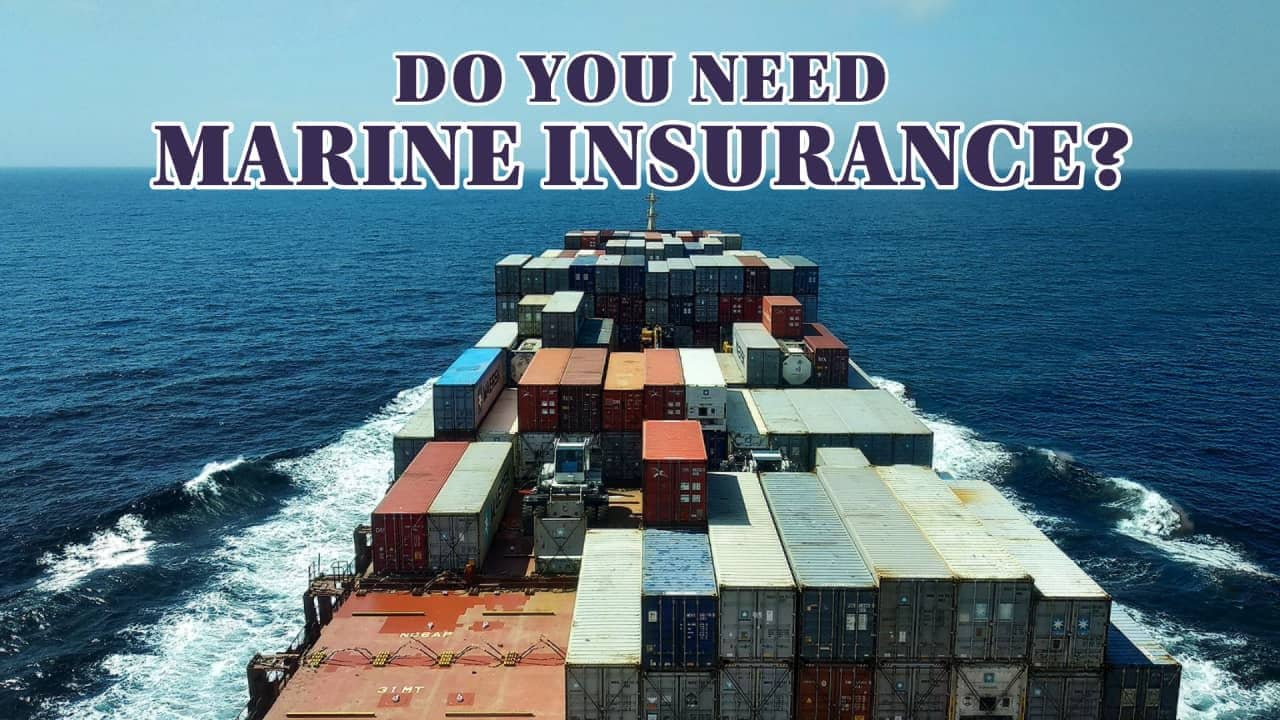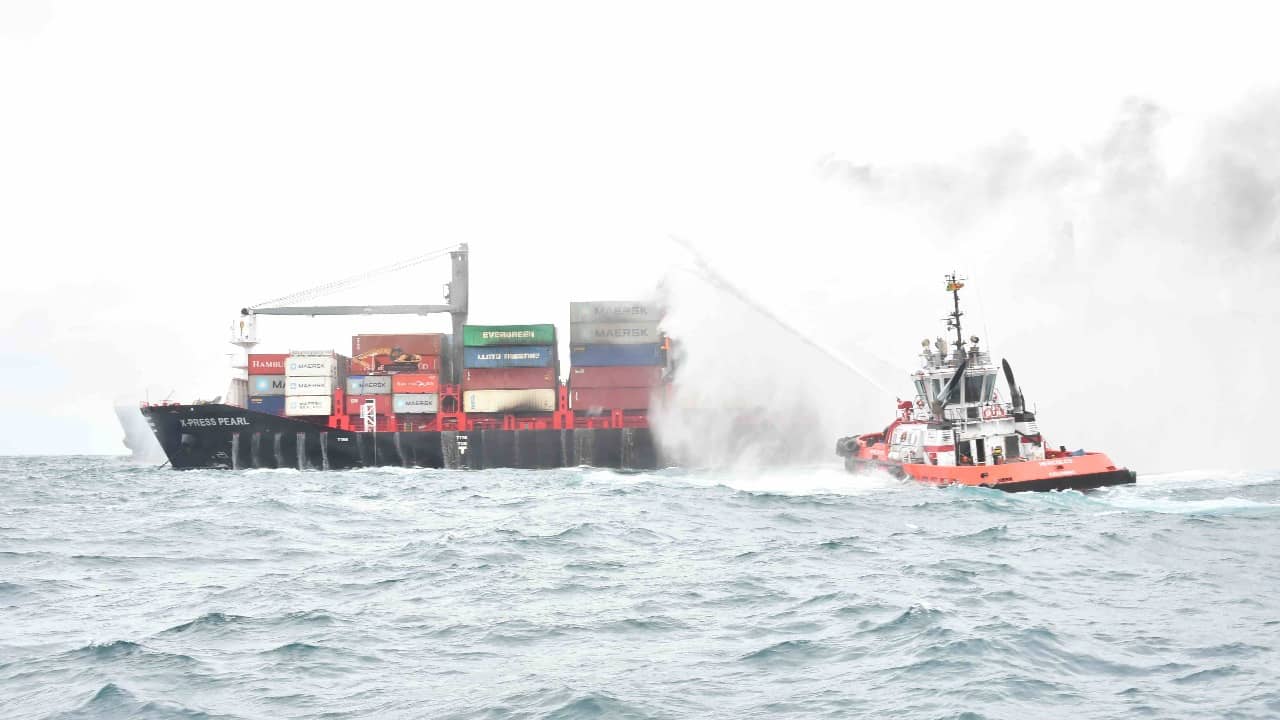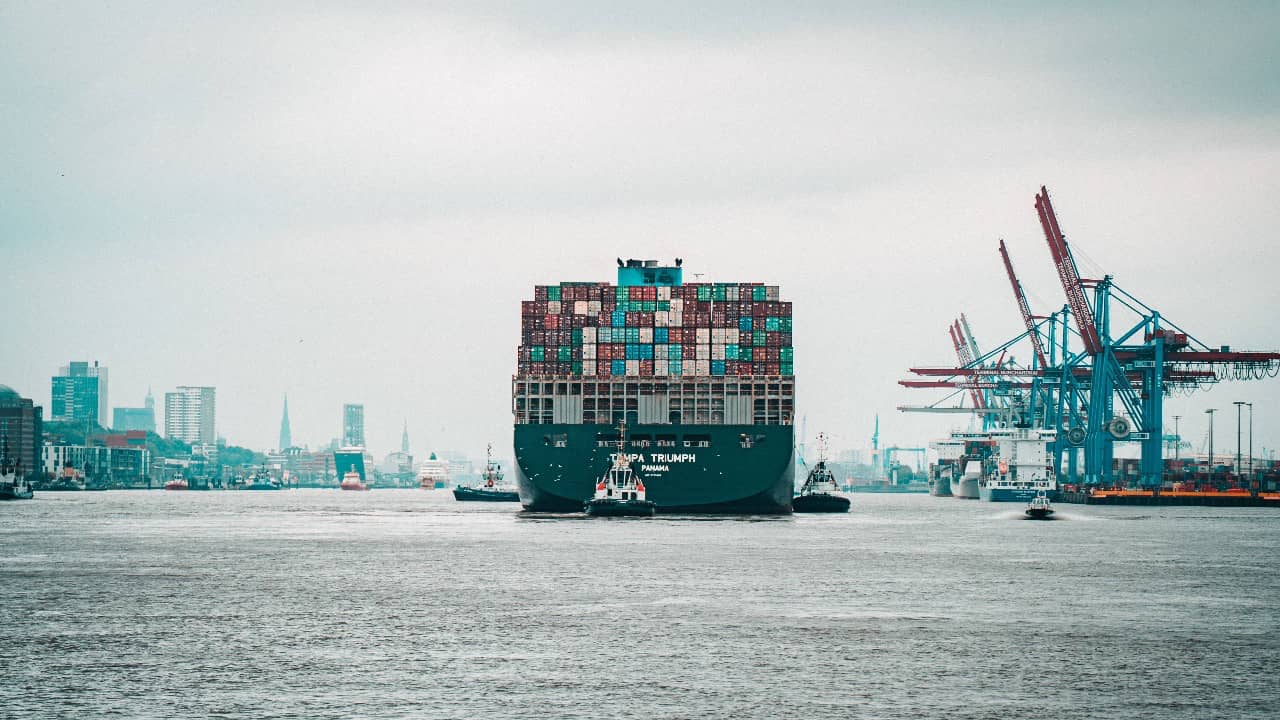
5 Claims Trends to Watch in Marine Insurance
8-minute read
The long-term positive safety trend for the global shipping industry continues as total losses have more than halved over the past decade.
However, a number of factors are leading to ever-larger claims, according to an industry loss analysis report by insurers Allianz Global Corporate & Specialty (AGCS), who summed up the 5 claims trends to watch in marine insurance based on their findings.
1. Fire top cause of claims by value
Fire and explosion have overtaken sinking and collision as the number one cause of marine insurance losses by value over the past five years, according to Allianz analysis of more than 240,000 claims with an approximate value of €9.2bn.
Fires accounted for 18% of the value of marine claims analyzed (equivalent to around €1.65bn) during the period ending December 31, 2021, compared with 13% for a five-year period ending July 2018.
The number of fires on board large vessels has increased significantly in recent years, with a string of incidents involving cargo fires, which are difficult to extinguish and can lead to the total loss of a vessel, loss of life and environmental damage.
A contributing factor is often mis-declared or non-declaration of dangerous cargos, while the International Union of Marine Insurance (IUMI) recently noted an increase in engine room fires, which may reveal some underlying risk, including crew competencies and modern technologies.
Another notable recent trend has been the threat posed by lithium-ion (Li-ion) batteries in electric vehicles or cargo that is not stored, handled, labelled or transported correctly.
Highly inflammable, they have been implicated in a number of car carriers, container ships and container fires in recent years.
A battery fire may have been a contributing factor in the March 2022 sinking of ro-ro carrier Felicity Ace in the Atlantic Ocean, along with its cargo of 4,000 vehicles.
In January 2020, a fire on the container ship COSCO Pacific was attributed to the combustion of a Li-ion battery cargo that was not properly declared.
Li-ion battery and electric vehicle fires burn more ferociously, are difficult to extinguish, and are capable of spontaneously reigniting hours or even days after they have been put out.
Most ships lack the suitable fire protection, firefighting capabilities, and detection systems to tackle these fires at sea, which has been made more difficult by the dramatic increase in ship size.
“Shipping losses may have more than halved over the past decade [54 total losses (over 100 GT) at the end of 2021 compared to 127 at the end of 2012, according to the AGCS Safety and Shipping Review 2022] but fires on board vessels remain among the biggest safety issues for the industry. The potential dangers Li-ion batteries pose if they are not stored or handled correctly add to these concerns,” explains Captain Rahul Khanna, Global Head of Marine Risk Consulting at AGCS.

2. Inflation and exposure growth drive claims severity
With many countries seeing rates at or around 10%, soaring inflation is compounding existing trends driving higher claims severity, including larger vessels and environmental, social, and governance (ESG) factors. Higher steel prices, the increasing cost of spare parts, and rising labour costs are all impacting the cost of hull repair and machinery breakdown claims.
Accidents involving large container ships and car carriers are particularly expensive, reflecting the accumulation of cargo exposures and challenges in emergency response and salvage.
In many cases, a small incident, such as a fire in mis-declared cargo or errors in stability calculations, have resulted in a total loss.
In particular, higher salvage and wreck removal costs are associated with larger vessels, which require specialist equipment and rely on a limited number of ports of refuge.
The ultra-large container ship Ever Given took almost a week to free, having blocked the Suez Canal in 2021, while its sister ship, the Ever Forward, took a month to re-float after it ran aground a year later in Chesapeake Bay in the US.
Both incidents were declared ‘general average’, a complex process whereby cargo interests and vessel owners share losses and the costs of salvage.
Salvage costs have also been rising in response to heightened ESG and sustainability concerns, which favour lengthy and expensive wreck removal.
The capsizing of the car carrier Golden Ray in the US in 2019 was one of the costliest shipping incidents in modern times, costing over $1bn, while the wreck removal of the Rena container ship, which sank in 2011 off New Zealand, cost an estimated $450mn.
The Rena clean-up operation was not declared complete until April 2016.
Inflation is also adding to the problem of rising values at risk.
The value of vessels and cargo has been rising at a time of growing exposures linked to larger vessels, which can carry over 20,000 containers at a time.
The surge in demand for shipping has seen the value of vessels increase. According to Clarkson Research Services, the combined value of the global merchant fleet increased 26% to $1.2trn in 2021.
The average value of container shipments has also been increasing with inflation and an increase in the shipping of high-value goods like electronics and pharmaceuticals.
“We see more high value goods being shipped by container, while the average cost rises with inflation,” says Khanna. “It is not unusual to see one container valued at $50mn or more for high value cargos like pharmaceuticals. Such cargos need additional risk mitigation measures, such as GPS trackers and sensors that provide real time monitoring on temperature, moisture shock, light and door openings, for example. Cargo interests should also keep a close eye on insured values. Clients may need to adjust their insurance and policy limits, or risk being underinsured. We have seen claims for high value cargos where the cargo interest was underinsured by as much as $20mn.”

3. Cargo claims continue to rise
Damaged goods, including cargo handling and storage, are the top cause of marine insurance claims by frequency and the third largest by value over the past five years, according to AGCS analysis.
The most common claims continue to be physical damage, typically from poor handling, storage and packing. But recent years have seen a number of high-value theft and temperature variation claims.
Crime and theft are the third most frequent cause of claims.
Criminal gangs are targeting consumer electronics and high-value commodities like copper.
Cargos are typically stolen from ports, warehouses or during transit by armed robbers or fake handling agents.
Latin America is a hot spot for cargo theft, although there have also been large claims in Europe.
The insurance market has also paid some large temperature variation and fire claims involving pharmaceutical shipments, according to Régis Broudin, Global Head of Marine Claims at AGCS.
“Cargo values have risen noticeably in the past year. We recently saw a truck fire loss involving a cargo valued at $73mn from just one transportation – a concerning trend.”
“A global shortage of shipping containers has resulted in damaged containers being brought back into use.”
The recent boom in container shipping, which puts cargo handling and port turnaround under pressure, has also affected claims.
A global shortage of shipping containers has resulted in substandard and damaged containers being bought back into use, while a deterioration in the economic environment and the higher cost of living could have implications for future theft and civil unrest claims.
“We have always seen cargo losses from defective containers, for example caused by ingress of water. But if a lot of substandard containers are brought back into use, the result could be a higher frequency of losses in future months,” says Captain Nitin Chopra, Senior Marine Risk Consultant at AGCS.
4. Supply chain exposures and disruption continue to impact
Recent years have highlighted supply chain disruption exposures in shipping, as maritime incidents, natural catastrophes, cyber-attacks, Covid-19 and Russia’s invasion of Ukraine have brought major delays.
Further disruption has also been caused by port congestion, labour shortages and constrained container capacity.
The trend for larger ships is also increasing supply chain exposures. Larger vessels, while more efficient, require port infrastructure and logistical support that is more specialist than traditional shipping.
There are greater concentrations of cargo risk on large vessels and in major ports, so any incident could affect large volumes of cargo and companies.
Ports are also increasingly reliant on technology, where an outage or cyber-attack could cause chaos.
“Commercial pressures are a contributing factor in many losses that resulted from poor decision-making,” says Chopra. “The pressure on vessels and crew is high. Some may be tempted to ignore issues or take shortcuts, leading to future losses.”
“Risk managers must take these factors into account and take a more risk-managed approach to the shipping aspect of supply chains,” explains Broudin. “In the past, companies have not paid enough attention to cargo risks and exposure accumulation. Companies need to start treating cargo risks more like property assets, tracking and monitoring exposures, and taking a more proactive approach to protecting them.”
In addition to improving the transparency of cargo exposures, companies should challenge freight forwarders on the risks, such as the quality of the vessel, loading and operation.
“Events over the past year have shown how fragile and interconnected supply chains are, and the critical role played by the shipping industry. It is essential companies understand their accumulations and consider ways to minimize exposure to major events,” says Khanna.

5. Climate risks contribute to claims
Climate change will increasingly affect marine insurance claims, with extreme weather events and new exposures linked to the net-zero transition.
Natural catastrophes are the fifth biggest cause of marine insurance claims by frequency and severity for the five-year period ending December 2021, according to AGCS analysis.
Extreme weather and natural hazards have contributed to a number of large vessel and cargo losses – at least 25% of total vessel losses reported in 2021 alone.
In addition, the drought in Europe during 2022 caused disruption to shipping on the Rhine, preventing many vessels from navigating this critical European shipping route fully loaded.
In the US, many barges ran aground on the lower Mississippi River as drought dropped inland waterways to levels not seen for decades, impacting one of the most cost-efficient means of getting commodity crops such as grain into the global market.
The weather has also been a factor in the number of containers lost at sea, as heavy seas exert forces on large vessels and container lashings.
According to the World Shipping Council, the annual average number of containers lost at sea has increased by 18% over the past 14 years to 1,629 in 2021.
Average losses for the two-year period 2020-2021 alone were 3,113 compared to 779 in the previous period.
Efforts to decarbonize the shipping industry will also impact claims going forward.
With 90% of international trade moved by sea, shipping is a major contributor to greenhouse gas emissions (GHGs).
The International Maritime Organization (IMO) is working towards a 40% cut in GHGs across the global fleet by 2030, but this will require the industry to develop sustainable forms of propulsion and vessel design.
A key risk in the transition will be the adoption of alternative fuels, which could include liquefied natural gas, green hydrogen and methanol, as well as electric- and wind-powered assisted vessels.
New technology and working practices can result in new risks or unexpected consequences.
Machinery breakdown is the fourth largest cause of claims by frequency and value over the past five years – and there have been a number of these claims and contaminated fuel claims related to the introduction of low sulfur fuel oil under IMO 2020.
This was introduced to cut sulfur oxide emissions as marine fuels and bunkering have become more complex.
The shift to greener energy sources is also giving rise to new claims scenarios.
In 2022, the drifting bulk carrier Julietta D8 collided with an offshore wind turbine foundation and transformer station in the Hollandse Kust Zuid wind farm, having previously collided with the tanker Pechora Star after its anchor gave way in a storm.
With 2,500 wind turbines due to be installed on the North Sea before 2030, the risk of a ship-to-turbine collision is estimated at 1.5 to 2.5 times a year, according to the Maritime Research Institute Netherlands (MARIN).
Source: Allianz Global Corporate & Specialty Global Risk Dialogue Customer Magazine
P.S. Easy Freight Ltd helps New Zealand importers & exporters to save money on international freight and reduce mistakes by guiding how to comply with Customs and biosecurity rules.
➔ Contact us now to learn how we can assist you.
